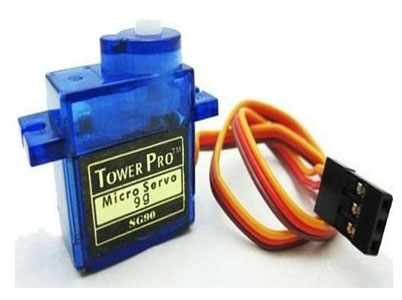Key Takeaway
A servo motor in IoT precisely controls the movement and position of parts in machines. It uses pulse-width modulation (PWM) signals to rotate to specific angles, allowing exact control.
In IoT, servo motors are essential for tasks like adjusting smart home devices and controlling robotic arms. These motors integrate seamlessly into IoT systems, enabling remote monitoring and control through the internet. This precision makes them vital for modern IoT solutions, enhancing automation and efficiency.
Role of Servo Motors in IoT Applications
Servo motors serve as the muscle behind many IoT applications. These motors are used in devices that require precise movement control, such as automated doors, robotic arms, and smart cameras. In IoT, servo motors are often paired with sensors to react automatically to real-time data. For instance, in a smart home system, a servo motor can adjust the angle of solar panels based on sunlight intensity, improving energy efficiency. Hook: Imagine a world where devices move intelligently on their own, responding to real-world data without human intervention. That’s where servo motors shine. Their precision makes them ideal for tasks like positioning and orienting objects.

Integration of Servo Motors with IoT Sensors
One of the most exciting aspects of servo motors in IoT is their integration with sensors. IoT systems rely heavily on data collected by sensors, and servo motors act on that data. For example, in a surveillance system, sensors detect motion, and the servo motor adjusts the camera’s position to follow the movement. This synergy between sensors and servo motors allows devices to be responsive, adaptive, and smart.
Another use case can be found in agricultural IoT devices, where soil moisture sensors trigger servo motors to adjust irrigation systems, ensuring crops get just the right amount of water. Hook: Servo motors and sensors work hand-in-hand, transforming IoT devices from passive observers to active participants in their environments. This dynamic interaction enables more efficient, autonomous systems that can react in real-time.
Use Cases for Servo Motors in Smart Devices
Servo motors are making their mark in a wide range of IoT devices, from smart homes to industrial automation. In smart home devices, they’re used in automated window blinds, security systems, and HVAC systems, where precision control is necessary. For example, a smart thermostat can use a servo motor to adjust the airflow direction in heating or cooling systems based on user preferences or temperature readings from IoT sensors.
In healthcare, servo motors enable accurate positioning of robotic surgical instruments or prosthetics, where precision is critical. In the world of logistics, servo motors are used in conveyor belts and automated storage systems, ensuring the smooth and efficient transport of goods. Hook: The versatility of servo motors in IoT shows just how much potential there is for smarter, more efficient systems across various industries.
Benefits of Using Servo Motors in IoT Systems
The use of servo motors in IoT systems brings several advantages. First and foremost, they offer high precision, which is essential for many IoT applications. Whether it’s adjusting the position of a camera or controlling the movement of robotic arms, the level of control provided by servo motors is unmatched. They also offer efficient power consumption, which is critical for IoT devices that need to run on low energy.
Another key benefit is their ability to deliver high torque at low speeds, making them ideal for tasks requiring both strength and precision. In addition, servo motors can be easily controlled using IoT platforms, allowing for seamless integration into broader systems. Hook: Servo motors’ blend of precision, efficiency, and adaptability makes them the perfect partner for IoT systems aiming to automate complex tasks.
Future Trends in Servo Motors and IoT
As IoT continues to evolve, so does the role of servo motors. With the growing demand for smarter, more efficient systems, we can expect to see servo motors becoming even more integrated into IoT applications. One emerging trend is the development of smaller, more energy-efficient servo motors, which will be critical for wearable devices and other portable IoT gadgets.
Another trend is the advancement in AI and machine learning, which will allow servo motors to become even smarter. Imagine an IoT system where servo motors can learn from their environment, adjusting their movements over time to improve performance. Hook: The future of IoT and servo motors is all about smarter, more adaptive systems that can improve themselves continuously.
Conclusion
The relationship between servo motors and IoT is only getting stronger. As we move toward a future where automation and connectivity are the norms, servo motors will play an even more critical role in enabling precise, reliable, and efficient systems. Whether it’s in smart homes, industrial automation, healthcare, or agriculture, the applications for servo motors in IoT are vast and growing.
For a newly joined engineer in the industry, understanding servo motors’ role in IoT is essential. These small yet powerful devices are the backbone of many IoT systems, and their importance will only increase as technology continues to advance.
